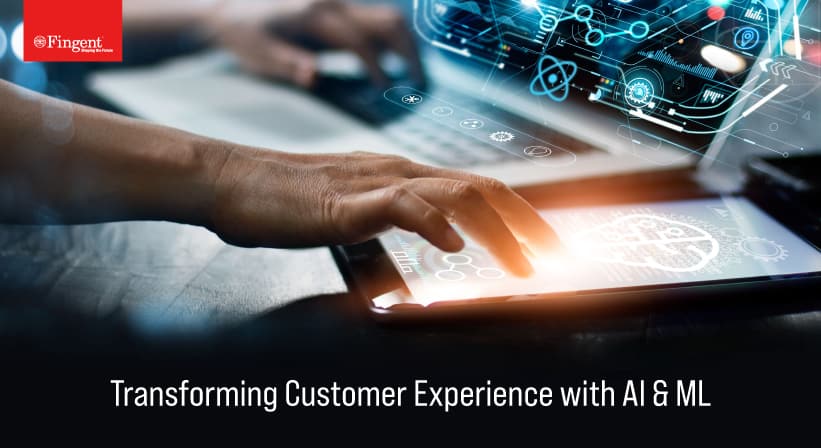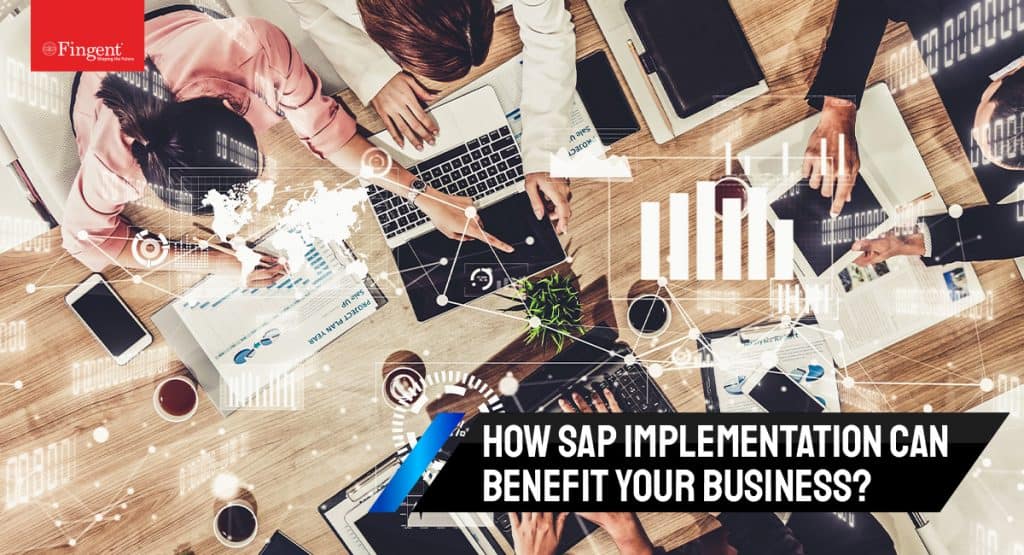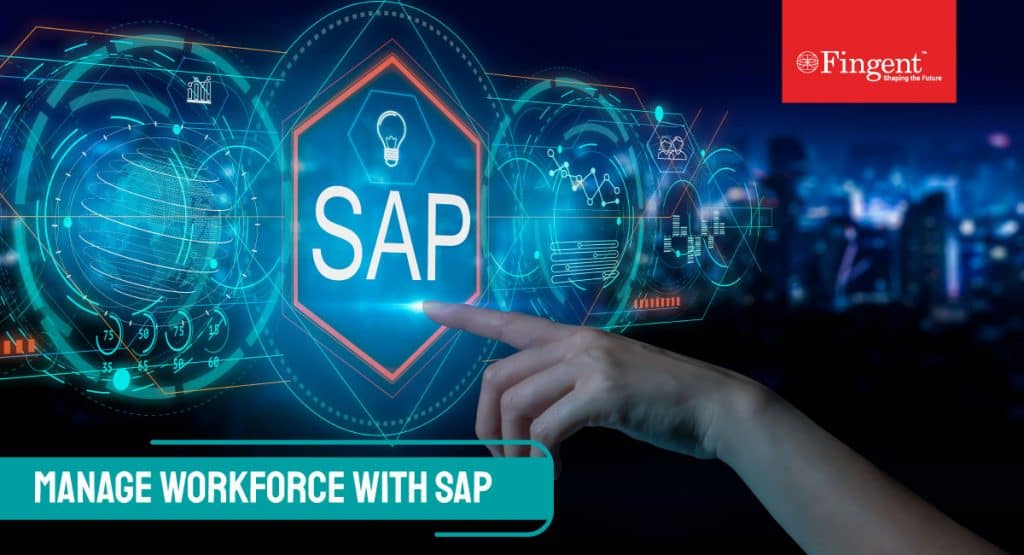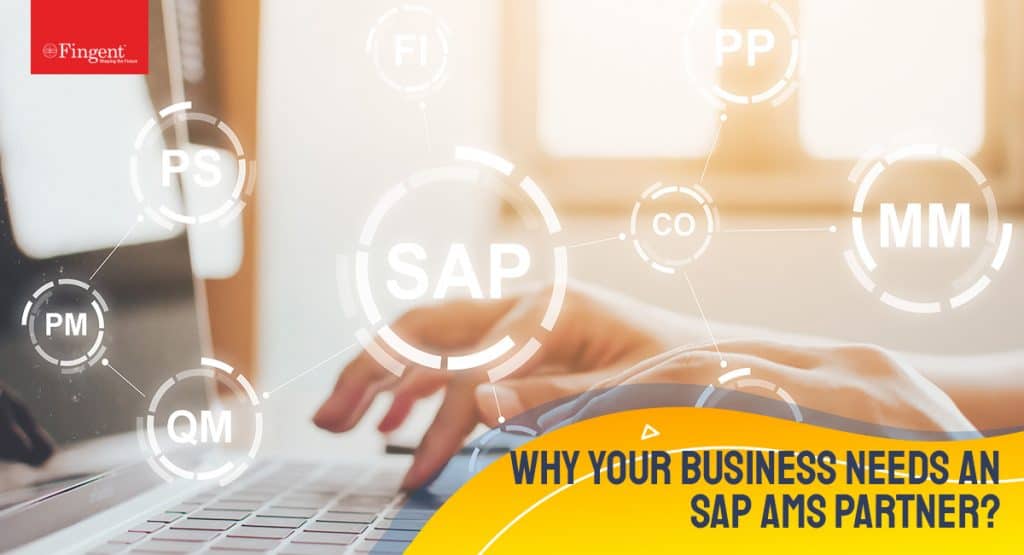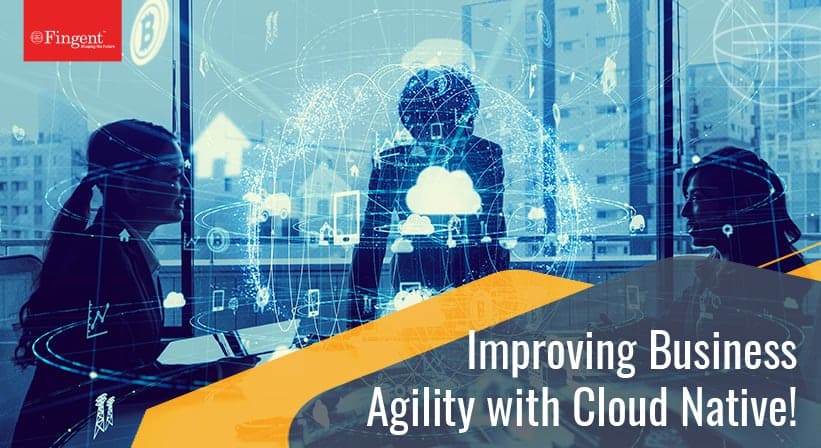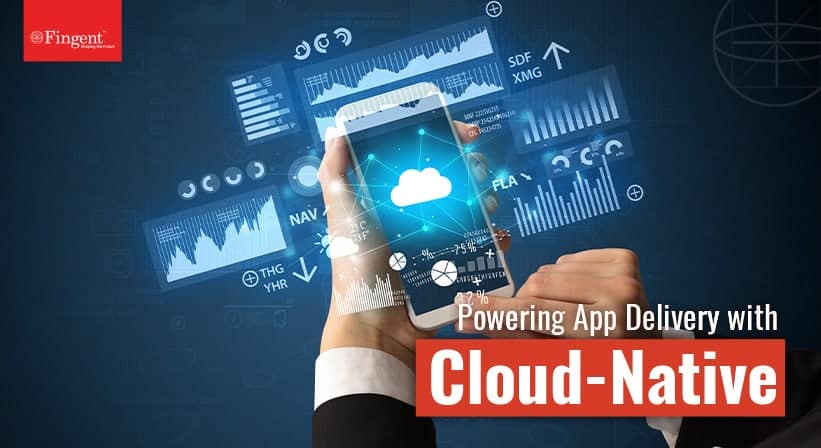Category: Business
Are you a business owner who is in a quandary about migrating your business to SAP S/4HANA? Do you do it now, or do you wait? Here’s some help!
Most business owners are moving toward SAP S/4HANA at their own pace. Most businesses put away migration due to the lack of urgency. For one thing, they feel that the discontinuation deadline of support ERP support is four years away (2027). Not all agree, though.
24% of businesses are already using SAP S/4HANA.
If this isn’t reason enough, a business should move to SAP S/4HANA to make the project worthwhile on all fronts: SAP S/4HANA is a prerequisite for completing your digital transformation. Without that transformation, you will be left behind your competitors. Worse yet, you will be behind where your users expect and need you to be.
SAP S/4HANA is not just a technical upgrade, it is a business transformation. So, you should not be asking, do it now or wait. Instead, remember the current scenario: it is now or never!
Takeaway: the longer you wait to migrate to SAP S/4HANA, the farther you will fall behind your competitors.
Read more: Strategizing a successful SAP S/4HANA Migration for your business
Top 10 Reasons Why You Must Migrate Now
The reasons for migration are compelling because the benefits are significant. With S/4HANA, companies can focus on growth and expansion without worrying about the technical aspects of integrating various IT systems.
The benefits of S/4HANA are countless, and it is time for your business to unlock its full potential. Join the league of agile and adaptable businesses today by incorporating S/4HANA into your business model.
Did you know: Increased revenue from functionality enabled by SAP S4HANA resulted in a net profit of 25.2 million?
1. Better Integration and An Intuitive User Experience
S/4HANA comes with a sleek and user-friendly interface that makes it easy for businesses to design custom apps that work seamlessly across various devices. For instance, a company can create separate apps for sales inquiry, order overview, and sales fulfillment and then grant access to these apps based on the user’s role.
S/4HANA makes it simple to deploy one or many apps across different departments and functions, including sales, human resources, finance, and much more. With better integrations and an intuitive experience, S/4HANA is a smart choice for organizations looking to streamline their operations and boost productivity.
Did you know: Customer retention valued at 8.4 million was made possible due to the capabilities enabled by SAP S/4HANA?
2. Real-Time Analytics
One of any business’s top priorities is access to real-time data. Real-time data can help provide actionable insights on everything – from user behavior and user interactions to business intelligence.
Using a mechanism called a virtual data model, SAP S/4HANA can transform on-the-fly data optimized for transactional purposes into an analytics-ready structure. This solution can benefit users in business processes as they need valuable and relevant insights to help them make the right data-driven decisions on the fly.
SAP S/4HANA Embedded Analytics offers users a fantastic advantage by offering a plethora of preconfigured Business Content in the form of KPIs, analytical reports, predictive and planning scenarios, dashboards, and multidimensional reports that are like advanced pivot tables. This wealth of resources makes it incredibly user-friendly by providing ready-to-use solutions that cater to specific business requirements.
Did you know: Increased revenue from functionality enabled by SAP S4HANA resulted in a net profit of 25.2 million?
3. Enhanced Mobility
S/4HANA is the key to agility and flexibility in the business world. With its easy-to-use interface and flexible deployment options, the system allows companies to seamlessly update their business processes. Add a new sales channel, acquire a new company, or undergo a merger – S/4HANA can handle it all.
Let’s take the example of a company that has acquired another company that uses SAP and non-SAP IT systems. In the past, aggregating data, indexing, and integrating it would have been a daunting task. However, with S/4HANA, the integration process has become seamless and effortless. The system provides an option to bring the system into the SAP cloud without needing to integrate them. Businesses can leverage applications like Simple Finance to aggregate data from all of their acquisitions and subsidiaries without any hassle.
Did you know: Reduced run times are valued at over 2.1 million?
4. Simplified Landscape
SAP S/4HANA has revolutionized the business world by offering a simplified landscape. Businesses can now reduce complexity and streamline operations, thanks to this innovative solution. With SAP S/4HANA, companies can manage their IT infrastructure with ease, freeing up resources to focus on core business activities. From analytics to supply chain management, SAP S/4HANA provides all the support a business needs in a simple, intuitive package.
Furthermore, the system is cloud-ready, meaning that businesses can have access to the latest technologies and innovations without having to continuously upgrade their systems. SAP S/4HANA offers rich functionality and data analytics capabilities, providing businesses with real-time access to critical information and insights.
With a simplified landscape, companies can focus on their business objectives and drive growth, without worrying about the complexity of their IT infrastructure. In conclusion, SAP S/4HANA is the future of business systems. A simplified landscape is the first step toward unlocking the full value of the system and is becoming increasingly necessary. SAP S/4HANA is the perfect solution for businesses seeking a simplified IT environment that is scalable, intuitive, and functional.
Did you know: Increased productivity of IT organization employees is worth $442,971?
5. Advanced Automation
With S/4HANA, businesses can say goodbye to boring, repetitive tasks thanks to the Robotic Process Automation solutions that automate these mundane tasks. This leaves employees with more time to work on important tasks that require special attention. To make things even better, there are over 150 RPA bots available to use with S/4HANA. The integration of AI and ML technologies can provide intelligent insights into data collected from automation, taking things to the next level.
6. Better Data Management
If you run a business, you know how important database management is. Well, with SAP, you can take a deep breath and relax. They got you covered with a bunch of solutions made to make your IT environment even more manageable.
For example, with SAP HANA database administration, all your SAP ERP data is under lock and key and constantly being checked for optimization. You will never have to worry about it being unavailable.
7. Improved Integration
Preparing financial reports for a multinational company with multiple subsidiaries is not an easy job. It is tedious to connect with different groups, collect data and prepare reports. However, with S/4HANA you can easily connect with other people and groups and close books faster. Improved integration enables you to monitor, access, and analyze data from different groups.
Did you know: Accelerated cash flow managing customer orders valued at $439,675?
8. Greater Scalability
As a business grows, it’s crucial to ensure that data storage, access, and processing capabilities are able to scale accordingly. Fortunately, SAP S/4HANA offers a valuable advantage in this area with its ability to easily scale based on concurrent users and associated data volume across various network environments. This means that businesses are able to expand their data models without the concern of decreased performance. With SAP S/4HANA data growth will not impede a business’s ability to keep up with demand.
Did you know: Simplified accounting accelerated collection worth 1.1 million?
9. Enhanced Security
SAP S/4HANA is known for its exceptional data and application security, making it a top choice for many organizations. Additionally, the platform offers secure setups and other benefits. Moreover, privacy features enable compliance with regulatory and compliance requirements.
10. Future-proof your business
SAP S/4HANA is a cutting-edge platform created to cater to contemporary businesses’ and future demands. Its state-of-the-art features will enable businesses to stay adaptable and keep up with the ever-changing business environment, ensuring they stay competitive.
Read more: SAP ECC vs SAP S/4HANA – What should be the next move for your business?
How Can Fingent Help
From vision to design and delivery to maintenance, Fingent can help bring end-to-end expertise to your business’s digital transformation challenge with SAP S/4HANA. Our team can assist in transforming your strategic goals into a digital framework that streamlines your procedures and simultaneously triggers future innovation.
We offer a range of services, from implementing new systems to converting and consolidating existing SAP Business Suite systems. Our expertise in strategy and delivery enables us to join your journey at any stage, producing a sustainable platform that facilitates the growth of your business. Reach out to us today and let’s get started on this amazing transformation.
Stay up to date on what's new

Featured Blogs
Stay up to date on
what's new



Talk To Our Experts
“A simple rule: always give people more than they expect.” – Nelson Boswell
The cycle of business starts and ends with customers. Keeping them satisfied and happy is the number one rule of any business that dreams of being successful. Customer needs and expectations never cease, so businesses should always be prepared to meet and exceed their needs. Artificial Intelligence has been a substantial help in this area since the late 19th century, and it consistently finds new innovative ways to amplify its presence in modern businesses.
Meeting Customer Needs and Exceeding Expectations
Recent research reported that a good number of executives have already planned to invest more in rising technology to gain a competitive advantage. Due to the Covid-19 pandemic, almost all businesses were forced to move to an online platform to survive, further underscoring the need to adopt AI technology.
It is extremely imperative to recognize and address the needs, desires, and emotions of people which change from moment to moment. Businesses have to provide their customers and clients with care beyond purchases and respond to the intricacies in their lives. In a world that moves forward so fast, it’s best not to fall behind.
Read more: Realizing Self- Service in Modern Customer Experiences
What Is Artificial Intelligence and How Does It Impact Customer Experience?
The textbook definition of Artificial Intelligence is – a semblance of human-like intelligence processed by machines, especially computer systems. AI is used by developers to:
- efficiently perform mundane tasks that humans otherwise do.
- connect with customers.
- recognize patterns.
- solve problems.
AI Customer experience is when artificial intelligence tools are used to learn about customers and improve their business experience. The AI technologies that are famously emerging include machine learning, natural language processing, automation, chatbots, virtual assistants, and even enhanced customer experience platforms.
There are three major ways in which AI impacts Customer Experience –
1. Better Understanding Of Customer
Artificial Intelligence combined with machine learning enhances the gathering and analyzing of social and factual data of customers, which then facilitates businesses to gain an accurate understanding of their customers. AI is known for continuously learning and improving from the data it surveys. This enables it to predict customer behavior perfectly.
2. Real-time Decision Making
Making decisions in real-time is the ability of AI to collect fresh data from current interaction with a customer and make a decision with near-zero delay. It is a very effective marketing strategy and often leads to predictive analysis, which is the process of analyzing statistics, data mining, and modeling to make accurate predictions.
3. Hyper-Personalization
Artificial Intelligence, along with all its advanced technologies, proffers content that is specifically relevant to the customer. This eradicates the need to search for services the customer requires manually and adds a layer of comfort to the business and its customization techniques.
Top Ways Businesses Use AI To Tweak Customer Experience
Following are the top 8 utilities that Artificial Intelligence provides to boost customer experience –
1. Personalization
Businesses can easily gain a clear picture of their customer preferences and requirements by using AI and ML technologies which acquire and analyzes social, factual, and behavioral data. AI is built to predict client behavior by regularly surveying and improving the data it collects. This facilitates companies to analyze customer demographics and personal preferences. This, in turn, highlights the relevant products and resources during the browsing process.
2. Chatbots
A chatbot is a conversational AI using machine learning and natural language processing. It is automated and programmed to pretend to be human and carry out programming tasks based on specific triggers. Its unique ability is to conveniently and efficiently generate conversations between two people.
The most commonly found type of chatbot is a “question-answer bot” —this form of chatbot refrains from using advanced artificial intelligence but instead accesses a smaller knowledge base and utilizes pattern recognition.
Artificial Intelligence powered Chatbots make a business’s presence accomplished by allowing customers to find what they are looking for while simultaneously delivering a seamless experience.
Did You Know: 35% of customers want to see chatbots being used more often to improve communication and offer a better experience overall.
The best examples of Chatbots are – Apple’s Siri, Amazon’s Alexa, and Google Assistant.
Using simple rules and past interactions, bots provide insightful replies to any query, making their responses accurate, short, and creative.
3. Predictive Analysis
Predictive analytics, by definition, is to use data collected to predict a business’s future. It utilizes statistical algorithms blended with internal and external data to foresee future trends, ultimately enabling businesses to optimize inventory, enhance delivery times, boost sales, and reduce operational costs. A more accurate and punctual prediction occurs when Artificial Intelligence is added to the mix. Predictive analytics can be used by advanced analytics tools and machine learning models across any industry or business function.
4. Voice Recognition
The voice recognition model functions purely with the aid of AI to
- analyze the user’s voice and language,
- learn the words spoken,
- and then bring forth outputs with transcription accuracy as text data on a screen or model content.
With the help of this technology, devices can interact and respond to human questions in uncannily natural language.
With the ability to understand and converse with human language, Voice AI has opened up great opportunities for businesses to serve their customers better. It efficiently speeds up processes, increases productivity, and scales operations.
Approximately 55% of virtual assistant users prefer speech recognition apps be they proffer a complete hands-off operation of devices.
Examples of businesses that integrated AI for voice recognition and have successfully replaced touch-screen devices are – Amazon Echo, Siri, Google Assistant, Google Home, Amazon Alexa, and a few others.
5. Sentiment Analysis
A sentiment analysis system collects specific customer feedback and uses it to improve company products and services. When AI technologies are fused with this system, it can identify objects or situations that customers feel any negative emotions towards as expressed in text. AI understands the undertone of a statement rather than simply noting a negative or positive connotation.
Sentiment Analysis is majorly utilized by marketers to better understand their consumers’ sentiments, beliefs, and motives perfectly to make advertising to specific groups effective. It has a wide array of benefits ranging from patient insights and online reputation management to competitor analysis and product development.
Almost all social media platforms use Sentiment Analytics powered by AI. This way brands and companies can keep track of the content being shared and censor or filter content that could evoke negative emotions and cause problems.
6. Customer Journey Mapping
A customer journey map as the name suggests, is essentially the visual representation of the customer’s journey from brand discovery to purchase and post-purchase. It enables businesses to retrace a customer’s footsteps and see where their services might need any improvements or upgrades.
All through this journey, AI and Machine Learning play a vital role in ensuring a headache-free shopping experience. There are three essential stages to customer shopping: the Pre-Purchase, purchase, and post-purchase. With the assistance of AI and ML, customers thread these maps and help brands analyze and prioritize activities that impact customers, boosting internal collaboration and coordination.
The benefits of creating a customer journey map are that it helps:
- streamline the customer experience,
- optimize customer service costs,
- accelerate proactive sales solutions to customer problems, and lastly, boost customer retention rate.
Examples of businesses using customer journey mapping are – Home Depot, JPMorgan Chase, Starbucks, and Nike.
7. Fraud Detection
Fraud detection is another surprising area that AI has a distinguished hold over. AI can work with internal security to help organizations improve and protect corporate activities. Businesses can use AI to examine large quantities of exchanges and unravel misrepresentation patterns.
In the case of online fraud detection and prevention, machine learning consists of a collection of AI algorithms that are specially trained with the company’s data to suggest risk rules. The business owner can then enforce the rules to block or allow certain user actions, such as suspicious logins, identity theft, or sketchy transactions.
When fraud detection is handed over to AI and Machine Learning, businesses reap great benefits like – faster and more effective detection, reduced manual review time, faster predictions with bigger databases, and cost-effective solutions.
8. Personal Data Protection
AI and Data Protection are like two sides of the same coin; both are very important, and one cannot progress without the other. We all see and know that AI technology is advancing rapidly; it raises important questions about the use of personal data and the protection and storage of said data in AI systems.
AI is frequently used to minimize the risk of privacy breaches by encrypting personal data and detecting potential cybercrime incidents. It is, therefore, pivotal for businesses to maintain a balance between technological advancements and artificial intelligence with respect for data protection rules and guidelines.
The main benefit of Data Protection Artificial Intelligence is the elimination of human errors and its keen sense for spotting new trends and patterns.
Amazon, Apple, Facebook, IBM, Microsoft, and many other grandiose organizations have implemented this system, and many more are predicted to follow.
Read more: How AI and ML are reshaping customer experience.
AI In Action – Use Cases
AI has been implemented in virtually every facet of our lives and in every industry imaginable. Here are 3 Use Cases that will give you a gist of how they can be applied successfully.
1. Chatbots Creating Engaging Learning Experiences
Learning experiences become unique and personalized when the right assistance is provided at each stage of learning. That’s where leading educational institutions are now deploying Automated Intelligence-driven ecosystems to facilitate students to interact with AI-enabled Teaching Assistants (AiTA). The system, when tightly integrated with other Teaching Assistant Bots, enables improved interaction, easy instructor-led training, and enhnaces student-instructor relationship.
2. Simplifying Claims Management for Legal Firms
A typical compensation claims processing takes up to three years for case settlement costing an average of $85000. It’s often challenging for legal firms to balance time, money, and the cases in hand. That’s why they are now implementing AI and machine learning to improve performance efficiency. Utilizing AI and machine learning to settle claims can help legal firms reduce costs up to 57%.
3. Netflix Gets You!
Netflix is the largest streaming platform, with more than 200 million customers globally. It gained a majority of its popularity due to its personalization feature. This streaming service uses AI to create a personalized home screen interface for individual subscribers and accounts. When viewers create a new account, they are directed to pick a few of their favorite TV series and movies. The AI at the crux of Netflix analyzes the data fed to it and provides recommendations similar to the favorites picked by the user. It continues to customize the suggestions displayed based on what the user watches.
4. Rolls-Royce Rolls Out Smart, Responsible Manufacturing
To exemplify the impact of AI on Predictive Analytics, we can look at Rolls-Royce, one of the world’s largest manufacturers of aircraft engines. It deployed predictive analytics to help drastically reduce the amount of carbon produced in its engine’s product while simultaneously optimizing maintenance to assist clients and keep their planes flying longer.
5. Ask Julie!
“Ask Julie” is Amtrak’s virtual assistant. Amtrak, the national passenger railroad company of the United States has implemented this chatbot to the best advantage. Ask Julie has successfully helped provide Amtrak provide a seamless customer experience to “over 375,000 customers on their website each day and over 30 million passengers on over 300 trains each year.” The result – an 8X return on investment, more effective customer services. and reduced email costs.
Finding The Right AI Partner – A Few Tips
Digitalizing a business can be very daunting, especially when you want to integrate Artificial Intelligence into its core. Finding a partner who understands you and can communicate well with you is quite hard to find, but you must not give up hope! Keep looking because it is better to spend a little more at the start and have a quality setup rather than spend less and have a wobbly foundation that could jeopardize your whole AI implementation. Here are a few tips to keep in mind while looking for a capable AI partner –
1. Priorities
When looking for your potential AI partners, choose someone who can help the business and its employees prioritize and manage workloads.
2. Comprehend The Difference Between Machine Learning And Artificial Intelligence
Although the two may sound like they perform the same functions, do not be fooled. They each have their own region of expertise so look for someone who acknowledges that.
3. Invest In The Right Tools
In the current economy, businesses can not afford to splurge money on luxuries. Pick a partner who understands your company’s budget and can plan a perfect setup for you.
How Fingent Can Help Seamlessly Leverage AI For Customer Experience
Artificial Intelligence is a wide ocean of opportunities, if you have the right swimming gear, you can glide on its surface. Making the right decisions and trusting the right people with your projects should not be taken lightly. Fingent is committed to providing impactful software solutions to meet business goals seamlessly. Our certified experts focus on client-centered transparency and offer complete services with a wide range of Artificial Intelligence capabilities. Our team can boost your business to be more efficient and robust through intelligent technology. We have nearly two decades of experience and completely understand our client’s needs and requirements. Give us a call and let us know how we can help you.
Stay up to date on what's new

Featured Blogs
Stay up to date on
what's new



Talk To Our Experts
A technology’s light shines brightest when it strives to consistently evolve and cater to the needs of society. In today’s world, running a successful business has become quite a challenge. Organizing all its vital and smaller processes into a unified system can be immensely helpful to business owners. SAP swiftly comes to the rescue here. It is also evidently evolving to reliably meet the needs and demands of modern businesses. In this article we will take a deeper look into these progressions and how they benefit a business.
What is SAP?
SAP is expanded to “Systems Applications and Products in Data Processing”. It was first developed in 1971 by IBM engineers. It integrates and stores common information while ensuring that data flows deftly from one component to another without the need for unnecessary data interference.
SAP is currently topping the charts as the best ERP software and houses hundreds of fully integrated modules overlaying various aspects of business management. There are essentially 2 Types of SAP ERP system Modules: Functional Modules and Technical Modules. Each module focuses on essential business functions, from human capital management and production planning to plant maintenance and quality management.
The Impact of SAP on Modern Business
SAP ERP has a prodigious impact on business management. It houses features that are helpful in every aspect of running a business. It isn’t news that organizations depend deeply on technological tools to collect and rapidly analyze data with an aim to deliver insights into the performance of the business.
SAP S/4HANA is currently used by more than 28 thousand organizations around the globe to process complex data and deliver realistic insights in real time through custom applications and innovative use cases. Listed below are a few fields that are indented by SAP ERP:
1. Retail
Inside the retail industry, S/4HANA specifically thrives as it extends real-time visibility into supply chain operations, ensuring that retailers can manage inventory levels better and boost customer satisfaction. With S/4HANA, retailers track product availability with ease and improve delivery times.
Adidas exemplified this when it installed S/4HANA to streamline its finances and supply chain processes aiding the brand to delivery more personalized customer experiences such as product and fit recommendations.
2. Consumer Goods
S/4HANA causes impressive impacts in the field of consumer goods. It qualifies organizations to efficiently manage product development, production, reduced costs, and distribution processes. Companies using S/4HANA are better at tracking product quality, reducing production errors, and ultimately improving supply chain efficiency.
3. Life Sciences
Life Science is probably the best field to witness SAP ERP technological tools’ magic. This industry uses S/4HANA to access real-time visibility into research and development processes, manage R&D pipelines and bring new products to market more quickly. With S/4HANA, life sciences organizations have the power to better manage their regulatory compliance requirements, refine data collection accuracy, and reduce time-to-market for new products.
A global pharmaceutical company titled – Boehringer Ingelheim, successfully implemented S/4HANA in order to better its financial processes and gain real-time insights into its global operations. The system was a grand success and now more than 80 companies in 41 countries from New Zealand to South America are using this system.
Top Ways SAP Is Evolving
Just like any reasonably good innovation, SAP too found room to improve and evolve in order to better benefit its users and drive modernization in the digital world. Aside from its simpler data models, friendlier user interfaces, better integration and amazing advancement in real-time analytics ingrained into S/4HANA software, SAP has shown some other signs of evolution.
1. Greater Integration
As new and fascinating technologies like AI, ML, and the IoT continue to unfold, S/4HANA is deftly integrating with these technologies. For example, S/4HANA is seen utilizing Artificial Intelligence and Machine Learning to offer highly advanced analytics and predictions. It also integrates with IoT devices to provide real-time data feedback. This takes business data processing to the next level and S/4HANA’s interaction with IoT enhances production quality.
2. Industry Functionality
S/4HANA is already known for its flexible nature while meeting the needs of industries, but in recent times we can see even more industry-specialized functionality features emerging. This largely includes enhanced functionality for drastically regulating industries like healthcare and finance.
3. Mobile Capabilities
It is clear to see that mobile technology is the fastest-evolving technology in the world. Keeping this is mind, S/4HANA has become increasingly mobile-friendly. This enhances its accessibility as almost everyone owns a smartphone in this era. Its benefits include new mobile applications that grant access to S/4HANA data and improved mobile web interfaces that make accessing S/4HANA on the go seamless.
4. User Experience
S/4HANA has always been laser-focused on quality user experience, and it is a positive sign that it is willing to work on this strength and hone its advantage. SAP continues to invest in simplifying the user interface and improving overall user experience. This includes new personalization tools and improved useability testing and design.
A Glimpse into The Future Of SAP
If anything is a guarantee, it is that SAP ERP will always find ways to improve and dominate modern business functions. A beneficial ERP generally has to create possibilities for companies to adapt and remodel with the agility and flexibility trending in today’s markets.
From a technological perspective, SAP is smartly integrating with all higher forms of technology, such as Machine Learning, IoT, and Artificial Intelligence. It utilizes a modular approach to provide an integrated, intelligent entourage of customers for cloud-native technologies.
From a business perspective, SAP ERP enables new business models like consumption-based billing and subscription-based businesses, which are seen as widespread in the market on the horizon.
Read more: Transforming Business with SAP S/4HANA Cloud
How Can Fingent Help?
Fingent has worked with many clients from 4 continents since 2003. Our experts focus on client-centered transparency and offer complete services with a wide range of SAP products.
With Fingent on your side, your SAP S/4HANA migration can never be tedious. Our unique SAP S/4HANA service implementation methodology assists you with preparing, exploring, configuring, and deploying enhanced capabilities with SAP. Connect with our experts today!
Stay up to date on what's new

Featured Blogs
Stay up to date on
what's new



Talk To Our Experts
SAP is widely known for its brilliant abilities and functionalities, the foremost being Data Analysis. The newest version of SAP ERP is the SAP Data and Analytics Solution. It has been making great strides in helping businesses make sense of their data and make intelligent decisions.
But before we dive into that, let us briefly understand what SAP is.
What is SAP ERP?
SAP, or Systems Applications and Products in data processing, is a powerful tool revolutionizing data handling. Its extraordinary data integration capabilities have helped businesses streamline data flow while storing common information securely and efficiently.
As SAP has evolved, it has become an ERP software compiled of many fully integrated modules that have found vital applications in human capital management, data analysis, production planning, plant maintenance, quality management, and more.
Read more: SAP S/4HANA: The Definitive Guide!
Understanding SAP Data and Analytics Solution
Now that we clearly understand what SAP is and what it does let us look into SAP Data and Analytics Solution. SAP has taken the same approach as any reliable technology that would find room to grow and improve itself. SAP Data and Analytics Solution titled SAP Datasphere was launched on March 8th, 2023.
SAP Analytics for cloud, also called SAP Datasphere, is a cloud-based Business Intelligence (BI) tool designed by SAP Company to provide all the vital functionalities of an analytic tool to business users.
Carefully engineered by SAP, this tool provides analytics compatibility from data received from various databases. This tool essentially converts the raw data collected from the transactional system into comprehendible insight to assist business owners in making better decisions.
The SAP Analytics feature solely depends on data algorithms, programming, and operations research to get data insight and to find meaningful information from data cumulated from multiple data sources. This data insight and information ultimately leads to better business planning and forecasting.
Key features provided by SAP Datasphere are – Business Intelligence, Augmented Analytics, Planning, Modelling, and Smart Transformation. Some benefits that business owners can reap from this solution include – high market profitability, more accuracy in the decision-making process, reduced downtime and performance obstructions. This is a reliable solution for many challenges faced by businesses.
How SAP Data and Analytics Solution Helps Businesses Maximize Data Value
SAP solutions are famously known for making the collection, storage, management, and analysis of Big Data from multiple sources easy and seamless. It takes out the complexity of data management with its suite of products and enables businesses to handle greater chunks of structured and unstructured data. SAP uses powerful AI-driven analytics, and this is an added benefit to organizations that want to enhance operational efficiency and customer engagement.
SAP’s new platform, in addition to all its predecessor’s capabilities, also allows businesses to gain meaningful insights into customer trends and likings in order to navigate smarter decision-making across the organization.
With SAP Data and Analytics Solution, a business can get greater value from their data in three notched forms:
1. Database
It effortlessly streamlines and upraises your landscape with advanced database technology that provides flexibility, multi-cloud support, and mixed workload processing to deliver impressive results.
2. Data Management
It caters to a set of technologically advanced tools such as Artificial Intelligence (AI), Machine Learning and The Internet of Things (IoT) to identify, compile, analyze, and draw out the most context-relevant data throughout the business enterprise.
3. Analytics And Planning
Finally, it freely gives people the power and freedom to discover, plan, and act on real-time on-site insights with technologically advanced tools to assist with planning and analytics. All this is combined with a trusted semantic layer.
Watch more: How ERPs like SAP help CFOs make crucial decisions simpler!
Overview Of SAP’s Analytics Tools
Among SAP’s many nifty and beneficial tools are three major analytics tools – SAP Lumira, SAP Business Objects, and Analytics Cloud. We will now look at the basic functionality of these tools and what they bring to the table.
1. SAP Lumira
SAP Lumira, earlier known as SAP Visual Intelligence, possesses many unique features allowing it to visualize and analyze data from many different sources. In a short period after IT had prepared a robust data model and exposed it to a Presentation Layer tool, business users flocked to create impactful visualizations with numbers, charts, filters, and rankings.
2. SAP Business Objects
This tool is a more centralized data reporting, visualization, and sharing suite. It transforms chunks of data into meaningful insights and is available anywhere at any time. Using a flexible architecture, the SAP Analytics platform simplifies, personalizes, and creates dynamic information consumption.
3. Analytics Cloud
SAP Analytics Solution with Analytics Cloud combines analytics and planning with a unique integration, allowing seamless access to multiple data sources. This tool facilitates trusted insights and integrated planning processes throughout the enterprise to help business owners make quick, informed decisions.
How To Identify the Right Tools for Your Business Needs
Selecting the right SAP Analytics Cloud tool for your business can be a daunting job, but it can be made easy by keeping these pointers in mind:
- It is imperative first to analyze your business needs. Gather your organization’s tech team, its investors, and all the people you need to make this decision.
- Once you have sorted out what aspects of your business could use a little push or improvement, scout out a suitable partner to team up with.
- Next, do a thorough background check on your new potential business partner and ensure that you contact referrals before you trust your business’ future in their hands.
- Lastly, take any advice your SAP service provider may offer and keep communication clear.
How Fingent Can Help in Leveraging the Best SAP Data and Analytics Solution
Fingent’s certified experts focus on client-centered transparency and offer complete services with a wide range of SAP products.
Selecting the perfect SAP product fortifies the success of your business. A few extra benefits you receive by partnering with Fingent are – improved security, efficiency in task completion right to the deadline, automation of the data collection process, and an overall 55% gain in productivity. Want to know more?
Give us a call, and let us help you.
Stay up to date on what's new

Featured Blogs
Stay up to date on
what's new



Talk To Our Experts
Stay up to date on what's new

Featured Blogs
Stay up to date on
what's new



Talk To Our Experts
“You on the cutting edge of technology have already made yesterday’s impossibilities the commonplace realities of today.” – Ronald Reagan
True to these words, the development and improvement of technology make possible several tasks we previously deemed impossible. The sky is quite the limit as long as humans are willing to innovate, create, and migrate.
This article will look at one of these brilliant technological advancements – SAP S/4HANA. We will also discuss how you can effectively migrate to this technology and benefit your business.
Introduction To SAP S/4HANA
SAP S/4HANA is SAP’s most famous product that works as a business suite with an in-memory database. It allows businesses to perform transactions, manage functions, and analyze data in real-time.
SAP S/4HANA is the digital heart of SAP’s plan to help its customers with digital transformations, including tedious tasks of modifying existing and new business processes. It is fabricated to house various advanced technologies, such as AI, machine learning, IoT, and advanced analytics. This enables it to help solve complex issues and analyze more information in real-time faster than any previous products.
Read more: SAP S/4HANA: The Definitive Guide!
Why Migrate To SAP S/4HANA?
There are innumerable reasons to migrate to S/4HANA, and listed below are a few important ones:
1. Cost-effective and fast
S/4HANA’s famous in-memory database improves the performance of complex business processes along with scalability and processing speeds. It plans, executes, analyzes, and reports data at exponential speeds.
2. Flexibility
The greatest benefit of S/4HANA is its compatibility with other databases, hardware, and software, making it the most versatile data solution available. It provides the flexibility to install new business acquisitions, proactively manage assets and eradicate mundane tasks from an employee’s workday.
3. Analytic Capacity
In-memory technology automatically means there will be no waste of time loading data from one location to another. S/4HANA reduces the time needed to perform even the most extensive reports. This, combined with its deftly built-in business intelligence functionalities, makes it capable of processing data in real time and taking required actions to overcome any hurdles.
4. Simple User Interface
For the sake of nostalgia and previous acclimations, SAP did not abandon its GUI of 20 years. However, a few modifications were still made to portray the enhanced business processes.
5. Future-proofing IT Investments
The sooner an organization migrates to SAP S/4HANA, the sooner it modernizes its business ecosystem. SAP is actively investing in this suite of business processes, and any future technological advancements will inevitably be pushed toward this fast-evolving and ingenious solution. Placing your eggs in this basket can help you in the long run.
Challenges Of Migrating To SAP S/4HANA
Just as with any business and technological transition, you are bound to face a few challenges while migrating to SAP S/4HANA. Listed below are a few:
1. Disorientation And Confusion
Being well-prepared for a conversion plan is always the first step in any SAP S/4HANA conversion project. Making conversion plans with fully detailed tasks to be performed in sequence and accurately calculating the time and effort it takes to convert the system is a serious responsibility.
2. Poorly-recorded legacy processes
Before jotting down a conversion plan it is imperative to evaluate existing processes. Often companies carry their existing problems to the new platform and regret the decision.
3. Complexity Of Custom Code
Custom code can be the backbone of information or the core code that unifies it. Conversion of any custom code to S/4HANA is an extremely complex task. An intensive study should be conducted to identify and evaluate the use of custom code. This analysis will then be the factor in deciding if the system can be converted or simply re-implemented.
Read now: How SAP S/4HANA Can Help Your Business to Become An Intelligent Enterprise?
Best Practices Of Migrating To SAP S/4HANA
As we’ve already seen, despite its many benefits, migrating to SAP S/4HANA can be challenging. It is far from impossible, however. Here are 5 best practices to keep in mind while making this conversion in order to keep the transition seamless:
1. Visualize your end goal
Figure out what your ideal ERP infrastructure and functionalities should look like. Starting a SAP migrating process means reverse integrating your ideal plan.
2. Determine what to rationalize, what to refine and what to conserve
This practice depends entirely on the application and which part of the business process it affects. Asses each module, component, and individual process that will be affected by the change and apply this practice to it.
3. Determine how much data is required for the move
If you want to reap the complete harvest of SAP S/4HANA with its advanced analytics, you have to carry over data from your existing ERP. The preceding data is what oils S/4HANA’s motors to be predictive and accurate in the first place.
4. Formulate an implementation strategy that reduces migration barriers
Every company’s migration process is different. However, Greenfield and Brownfield are the most famous ways of SAP S/4HANA migration. Greenfield is a total change from the old platform to the new platform and Brownfield is a technological upgrade.
5. Choose a consultant who specializes in selectivity
Picking the perfect partner for S/4HANA migration is critical to get the most out of the project. Find a partner who specializes in SAP environments and understands what the migration needs. Ensure that their selectivity in choosing what to migrate, what to preserve, and what to develop is on point.
How Fingent Can Help?
Fingent provides end-to-end planning, migration, and post-migration support and maintenance services. This includes tactical advisory on choosing the right S/4HANA migration path to suit your requirements. Our unique SAP S/4HANA service implementation methodology assists you with preparing, exploring, configuring, and deploying your project. We also provide support, project closure, and maintenance.
Fingent has a proven track record of helping clients across the globe with SAP S/4HANA implementation and migration. We can help you empower your business with this powerful too!
Reach out to us and talk to our experts.
Stay up to date on what's new

Featured Blogs
Stay up to date on
what's new



Talk To Our Experts
Most organizations assume that their work is done once SAP is implemented. Consider this: Do you own a car you have never given for servicing? Or any piece of equipment that has never been serviced yet continues to work optimally? Absolutely not!
Likewise, the SAP system must be optimized regularly to ensure smooth organization functioning. Such optimization will enable the business to reap the real benefits of SAP investments. In this article, let us look at how you can optimize the SAP system for better business performance.
Why Optimize SAP?
According to Uptime’s 2022 survey, 80% of data center managers and operators have experienced some type of outage in the past three years. One in five organizations reported a server outage involving significant financial loss, reputational damage, compliance breach, and more.
Did you know? Over 60% of failures result in at least $100,000 in total losses.
Optimizing your SAP system is necessary to ensure your business runs as efficiently as possible. Whether you are a large business or a small business, proper optimization of your SAP system can make a big difference in terms of efficiency, agility, and, more importantly, security.
Read more: 8 Ways SAP ERP Software Benefits Your Business
Benefits Of Optimizing Your SAP System
From startups to global conglomerates, all businesses can leverage the SAP system. It is a proven game-changer for businesses looking for ways to stay competitive, as it can equip them with tools and functionalities to enhance their performance. It can help your business:
1. Avoid Reactive Firefighting
Reactive firefighting comes into play when you have to work towards solving a situation whose outcomes are out of control. SAP takes that out of the equation. Once the SAP system is optimized, it gets easier to thoroughly, carefully, and practically monitor the systems instead of reactive firefighting.
2. Prevent Potential Failures
Optimizing your SAP system can enable quick and easy identification of potential problems within the SAP landscape. This prevents larger issues by enabling early detection of the issue even when their damage is minimal.
3. Reduce Noise
Nearly 40% of businesses suffered a major outage caused by human error, out of which 85% stem from staff failing to follow procedures or flaws in the processes.
Bombarding employees with notifications would lead to missing out on important information. SAP system optimization would reduce the unnecessary noise and the flooding of notifications that would otherwise occur. It could categorize the issue and help to focus on the matters that are actually important and may affect the bottom line.
4. Reduce Time-Consuming Processes
Time spent on tasks such as conducting daily performance and health checks, SLA, audit reports, and compliance reports adds up to quite a bit. This, in turn, can keep the team from focusing on fixing issues. SAP system optimization helps by enabling auto-scaling, which can detect types of applications, processes, and operating systems to deploy the right checks and limits.
It is important for every business to understand the benefits of optimizing its SAP system. But it is equally important to know the best practices. Before we consider that, let us consider common performance issues in the SAP system.
Common Performance Issues in SAP Systems
Performance issues may affect the entire SAP system or certain functions or operations. Around 10% of small and medium businesses have revealed that their per-hour downtime is over $50,000.
Performance issues can be divided into four categories: SAP application server, Database, Network, and Hardware. Here is an overview:
1. Application Server: The SAP application server is a complex amalgam of ABAP and JAVA application servers, filled with potential issues. System-wide, single transaction, and background job problems are typical, and slow performance may be intermittent or continuous.
Quick fixes can usually handle single-transaction issues, while system-wide surges may require extensive troubleshooting. That’s not all. Ad hoc performance issues, such as when CPU or memory usage abruptly rises, can also be tricky to diagnose. Furthermore, the JAVA server may suffer from sluggish performance due to an individual application or the entire cluster, and long-running jobs are often a cause of concern.
2. Database: These issues could range from slow data retrieval to long procedures, or even administrative errors. When attempting to diagnose the issue, it’s important to first recognize the type of database you have.
You should also make sure to check for high CPU or memory usage in the server, as that can be a major cause of the problem. Additionally, remember to make sure network latency isn’t the culprit. After all, that can heavily impact database performance!
3. Network: The issue with the network would be latency in all queries and truncations. If your server hardware is insufficient and slowing down SAP transactions, you may have to determine how many resources you need to support current SAP operations.
4. Hardware: Hardware issues may include bottlenecks that occur at certain times or around the clock.
Best Practices for Optimizing Your SAP System
Optimizing your SAP system involves a number of carefully executed steps, including optimizing your data structure, optimizing the architecture of your SAP system, and optimizing your applications and processes.
1. Data structure optimization – This involves making sure your data is organized in a way that is efficient and easy to access. It also involves ensuring that your data is properly indexed, ensuring that the most frequently used data is readily available.
2. Architecture optimization – This includes ensuring that your hardware and software are configured correctly in order to maximize system performance. It also means they are up to date with the latest versions and that any patches or hotfixes have been applied.
3. Application optimization – This involves making sure that your applications are running efficiently and that any bottlenecks are removed.
Testing And Monitoring Your SAP System Performance
The SAP system can be a powerhouse, but if it isn’t running optimally, it can bring your entire business to a screeching halt. To keep it in top shape, regular system health checks and performance monitoring are key – no matter how large or small your enterprise is.
Unfortunately, SAP doesn’t provide a straightforward way to monitor performance, troubleshoot problems, and get back to operations quickly. Instead, users are left with the tedious labor of manually analyzing each system component to find the root of the issue, which can take days and hurt the bottom line.
To prevent this, Fingent can help take care of monitoring critical tasks, work processes, batch processes, database stats, and more.
Read More: Optimize Workforce Management with SAP SuccessFactors and Qualtrics
How Can Fingent Help?
Successful optimization of the SAP system is the road to increasing ROI for your organization. But managing complex IT landscapes, different business processes, and multiple tools can be intimidating for in-house teams.
That’s why we at Fingent top custom software development company, provide audit and optimization services to ensure your organization reaches its goals with SAP. Our frameworks and methodologies help identify bottlenecks and bring the best out of SAP systems, helping you save money and improve your processes. Reach out to speak to our SAP experts and find out how we can help.
Stay up to date on what's new

Featured Blogs
Stay up to date on
what's new



Talk To Our Experts
“There are only two types of companies: those that have been hacked, and those that will be.”
– Robert Mueller, FBI Director, 2012.
Individuals and organizations are contributing to the global data boom every single day. And business hyperconnectivity creates new challenges in cyber security. Most organizations are adopting the “better safe than sorry” motto.
What can you do? This article will help you find the answer.
Security – A Very Real Challenge!
Did you know?
The global cyber insurance market is projected to double in size by 2015 to reach nearly 22 billion US dollars!
World data is set to grow to 175 zettabytes (that is, 175 followed by 21 zeros).
Companies worldwide are producing data in large amounts. And with large data comes the risk of higher manipulation. Are companies working on securing their data? Is your company prepared to combat a cyber attack? Cybersecurity is a real challenge! But with technology advancing each day, we now have better means to ensure data security. Let’s find out more about this!
Understanding SAP Security and Compliance
Maintaining a secure IT infrastructure is essential for any organization. SAP security is a means to protect your organization’s data. It monitors and controls access both internally and externally.
54% of organizations acknowledge that their IT departments are not adequately capable of handling advanced cyberattacks.
To protect their data, organizations should ensure that all user access is properly monitored, audit logs are regularly reviewed, and that access controls are regularly updated.
Additionally, organizations should implement a password policy to ensure all passwords are complex and regularly changed. Finally, organizations should confirm security patches are regularly applied to all SAP systems to prevent unauthorized access and potential data breaches. Best practices are key to ensuring your SAP systems remain secure and compliant.
Read more: Top Benefits Businesses Can Gain Form Fingent’s SAP AMS Practices.
Risks Associated with Poor SAP Security and Compliance
Poor security and compliance measures can expose a business to cybersecurity threats and data breaches. Without proper security measures, businesses are vulnerable to malicious attacks, unauthorized access, lawsuits, insurance rate hikes, criminal investigations, and bad press. Furthermore, it may result in heavy fines, reputation damage, and other losses. These are sufficient to put your organization out of business.
Did you know? The cost of data breaches may rise to over $5 trillion in 2024.
Therefore, businesses must understand the risks associated with poor SAP security and compliance and take the necessary steps to protect their systems and data. This includes implementing proper access control measures, monitoring user activities, and ensuring that all security measures are regularly updated and tested.
Common Challenges Faced in SAP Security Compliance
SAP security and compliance are becoming increasingly challenging for organizations of all sizes. As more organizations move to cloud-based SAP solutions, they face the challenge of ensuring consistent security and compliance across all systems.
In addition, as SAP applications continue to become more complex, organizations must ensure they have the right processes and tools to maintain security and compliance. Despite your understanding and diligence concerning safeguarding your SAP databases, chances are you are dealing with the following:
- Manual processes take too much time and are prone to errors, rendering it challenging to cover the entire digital estate.
- You will have to deal with heterogeneous point products that are difficult to manage.
- Third-party services that, in turn, are dependent on either of the aforementioned.
Organizations must have a comprehensive security compliance plan addressing these challenges to ensure their SAP systems are secure and compliant.
Read more: How secure is your business in a multi-cloud environment?
Eliminate Your SAP Cyber Security Blind spots with SAP System Best Practices.
SAP systems are the backbone of many business operations. As a result, ensuring the system is always secure and compliant with corporate policies is essential. To help ensure your SAP system is secure, here are some best practices you can follow:
1. Monitor user activity and implement user access controls
Ensure that all users have the least privileged access to do their job. This limits users’ access and reduces the chances of unauthorized access.
2. Teach the team to take responsibility
Everyone on the team may feel that they are not responsible for the breach. But the fact is that someone must take responsibility for the breach. And this fact must be made clear to all on the team.
3. Keep up to date on the latest enhancement packs
Periodically confirm that all patches and updates are installed regularly. This ensures that any security flaws in the system are addressed as soon as possible.
4. Ensure data is securely stored and encrypted
Develop a strong password policy. Require strong and unique passwords for each user and ensure that passwords are periodically changed. Use multi-factor authentication. This adds an extra layer of security and makes it more difficult for malicious users to access the system. Finally, monitor user activity regularly. This can help identify any suspicious activity or potential threats.
5. Revert to Standard installation
It’s essential to minimize the chances of potential security threats by replacing custom legacy code with updated, patched versions of the programming language standards and SAP applications. To do this, you should eliminate unused code to ensure you don’t accrue any vulnerable technical debt.
6. Identify security gaps
Staying secure requires early detection. Just as regular health checkups help detect issues early and provide a path for effective treatment, conducting frequent assessments of your ERP system can provide full visibility and comprehension of your ERP environment before you make modifications and detect when you may be lagging. Through regular health screenings, any security breaches can be identified.
Following these best practices will help keep the SAP environment secure. It is important to remember that security and compliance is an ongoing process and should be revisited and updated periodically to ensure it is up to date with industry standards.
How Can Fingent Help Attain the Best SAP Security Compliance
Determining which SAP security software is best for your business can be challenging, as it is an important decision. Fortunately, Fingent offers a tailored solution designed to keep critical systems secure. Our security solution also integrates with an organization’s wider cybersecurity monitoring, ensuring the security team is not left in the dark regarding potential threats.
Our experts understand the complexities of managing SAP compliance and are committed to making SAP support and compliance fit your budget and anticipate future needs. We strive to provide comprehensive and cost-effective solutions to all process aspects, including data reporting, administrative tasks, data analysis, and audits. Reach out to our experts and find out how we can help you.
Stay up to date on what's new

Featured Blogs
Stay up to date on
what's new



Talk To Our Experts
For more than a decade, businesses in all industries have undergone a digital metamorphosis. This evolution is marked by a transition from on-premises software solutions to cloud-based computing technology.
By leveraging cloud-computing resources, businesses can gain access to scalable assets, increase organizational performance, and optimize digital agility.
It’s a mistake to think about cloud solutions primarily as software-as-a-service (SaaS) applications. While these technologies are a valuable component of business modernization, they’re only the tip of the iceberg.
Businesses that create their own cloud-native applications can truly harness the power of discrete cloud technologies to deliver long-lasting competive advantages. As their name implies, cloud-native applications are “native” to the cloud computing environment. In other words, cloud-native software development involves creating applications in components optimized for deployment in the cloud instead of a physical computing environment.
What Is Cloud-Native Development?
In simple terms, cloud-native software development is the process of creating applications using core cloud-computing principles and resources. The architecture of cloud-native applications is highly scalable, responsive, and dynamic.
Cloud-native applications are designed to be deployed and run in cloud computing environments, and as such, they offer a number of benefits to developers. Some of the advantages of developing cloud-native applications include:
- Scalability: Cloud-native applications can easily (and often automatically) scale up or down to meet changing demand with consistent performance levels, making them well-suited for applications with fluctuating usage patterns.
- High availability: Cloud-native applications can be designed to be highly available, meaning they can withstand failures and continue to function even in the event of a hardware or software failure.
- Elasticity and Agile development: Using independent microservices isolates the effects of changes, making it easier for developers to iterate on their products and respond to customer needs.
- Cost efficiency: By leveraging the economies of scale offered by cloud providers, businesses can reduce their infrastructure costs and invest in building and improving their applications.
- Integration with cloud services: Cloud-native applications can easily integrate with other cloud-based services, such as databases, messaging systems, and analytics tools, which can simplify development and improve the functionality of the application.
Overall, the main advantage of cloud-native applications is that they are designed to take full advantage of the capabilities of cloud computing environments, which can help developers build and deploy applications more quickly, efficiently, and at lower costs.
Additionally, many cloud-native applications are “cloud-agnostic,” meaning they can be run on a range of cloud providers (hyperscalers) or function in multi-cloud environments. Much of the appeal of cloud-native software development lies in the ability to yield adaptable and versatile applications. Sometimes applications can benefit from services that are only available from certain cloud providers, which risks “vendor lockin,” so it pays to consider the trade-offs carefully.
Read more: Can Moving to Cloud Native Improve Business Agility?
Why Modern Businesses Need Cloud-Native Development
Like on-premises computing resources, software created with traditional application-development practices are bound by the limits of that technology. As such, they can’t provide the quality of experience that modern audiences expect.
Additionally, applications developed in an old-school environment often need re-factoring to try to match the performance of cloud-native alternatives when the former is introduced to a cloud environment.
By leveraging cloud-native development services, modern businesses can facilitate their digital transformation on a faster time horizon. Cloud-native processes enable businesses to serve their customers better and deliver a frictionless user experience.
Top businesses in virtually all industries leverage cloud-native development. Those that neglect to do so will fall further behind these trailblazers and find it challenging to maintain a foothold within their respective markets.
Adopting cloud-native processes is no longer an optional step—it’s become necessary for businesses that want to thrive in the digital marketplace.
Top Benefits of Cloud-Native Software Development
Your business can tap into the multiple benefits of investing in cloud-native software development. Specifically, your organization can:
1. Streamline the User Experience (UX)
When the goal of cloud native is to develop applications that can serve your business while adjusting to the speed of changing technology, the end user is always the priority.
Because of the improved speed of development and the ability to make changes during the development process, cloud native puts UX first. While there are many ways to enhance the UX, investing in cloud-native development is one of the most effective approaches.
2. Improves Development Strategy
Cloud-native applications enable developers to leverage two essential UX-centric methodologies: continuous integration (CI) and continuous delivery (CD).
Continuous integration is the process of merging code changes using automation. Multiple developers can merge code changes into a centralized project to streamline app development and generate a cohesive, fully functional product.
Continuous delivery addresses post-release application software updates. Instead of occasionally pushing out massive updates, CD involves delivering smaller updates more frequently. This short-cycle approach improves software delivery and performance while yielding a super UX.
Moreover, microservices can be easier to implement with quality assurance automation, which elevates achievable levels of code quality.
3. Protect Business Continuity
Making dynamic, user-friendly applications a central part of your business model can give you a competitive edge in the modern marketplace. However, if your application goes down, customer frustrations will mount, and your brand could experience lasting reputational damage as a result.
Since cloud-native apps can tap into stand-alone, scalable cloud resources, these products are far less likely to experience extended outages due to spiking utilization. Developers can more rapidly isolate and remedy the issue, as well as rapidly test changes when a cloud-native app experiences downtime, thereby protecting business continuity.
4. Meet Evolving Demands for Services
In the digitized marketplace, it seems as if customers’ expectations and demands are in a constant state of flux. Unfortunately, it can be difficult — if not impossible — to pivot rapidly using legacy application development processes.
Cloud-native architectures can give your organization the agility it needs to respond to sudden shifts in customer expectations. For instance, you could add a new feature that enables customers to communicate easily with your brand. You could also frequently update your app’s capabilities to improve overall performance and stay relevant in the digital marketplace.
Read more: Cloud-Native Application Development: How It’s Powering App Delivery
When Should Businesses Shift to Cloud-Native?
The short answer is “yesterday.”
In the long run, cloud-native software development outperforms traditional application development practices at every turn. Cloud-native development reduces risk, has broader scalability, and allows developers to make changes more quickly. Most notably, the speed of delivery is far and above one of the most compelling advantages of shifting to a cloud-native approach.
Your organization is undoubtedly using cloud-based computing resources in at least some capacity. You can complete the transition by modernizing your cloud-native development processes, too. Doing so will empower your business to regain a competitive edge within your respective industry.
At the same time, one should consider the downsides of cloud applications. Some cloud-native applications can be more complex than traditional applications, due to the need to integrate with multiple cloud-based services and manage distributed systems. This can create more opportunities for something to fail.
While cloud native applications can be cost-effective they can also be more expensive than traditional applications in certain situations, particularly if they require a large number of resources or if they have high usage patterns.
The Nexus Between Cloud-Native Development and Business Modernization
Today’s customers want the freedom to interact with brands across multiple touchpoints. This holds true whether your target audience consists of individual consumers or business-to-business (B2B) clients.
Modern businesses live up to this customer expectation by providing their clients access to user-friendly, intuitive, and dynamic applications. These organizations can expand their reach in the digital marketplace, connect with a broader audience, eliminate friction from purchasing processes, and generate more revenue, all by transitioning to cloud-native development.
Conventional, monolithic application development practices often present a significant hurdle to large-scale integrations, digital transformation and business modernization efforts. Your business can’t achieve its digital transformation goals without fully embracing the cloud-computing environment and its many resources.
Examining the Business Impact of Cloud-Native
The notion that cloud-native software development is the new gold standard isn’t just pure conjecture. This fact is supported by numerous case studies and research projects, including a recent business impact brief by 451 Research.
In the brief, the organization’s team reported that:
- 64% of companies develop at least half of their applications using cloud-native technology
- 49% of companies have partially or fully adopted Kubernetes
- 55% of companies have partially or completely adopted containers
451 Research analysts concluded that cloud-native software development has gone beyond the development process and evolved into a full-fledged methodology. As such, it should continue gaining momentum among brands passionate about actualizing digital transformation.
And that’s just the barest overview. Managers can review 451 Research’s business impact brief by downloading the report.
Why Choose Fingent for Cloud-Native Development?
Fingent’s suite of cloud-native software development services is designed to deliver maximum value to our clients. When leveraging Fingent’s cloud-native development services, your organization will experience:
- Consistent, High-Quality Results: As a client-oriented cloud-native development firm, Fingent focuses on providing high-quality, consistent results that exceed expectations. Our robust, agile teams and dynamic quality assurance practices ensure that our deliverables expressly meet your needs and address your most significant organizational pain points.
- Best-of-Breed Solutions: Fingent’s unique approach enables us to provide world-class cloud-native software development services that produce best-of-breed solutions. These cost-effective solutions will align with your budget and delivery timetable. With Fingent, you won’t have any last-minute surprises like budgeting issues or missed deadlines.
- Prebuilt Services: Fingent’s talented team can build truly custom solutions for your organization. However, we can also expedite development by leveraging prebuilt frameworks, applications, and microservices for common functions that are a staple of virtually all industries. Some of these prebuilt services include cognitive AI, shipment, and payment service functions.
- Pay-as-You-Go Models: With Fingent, you can transition away from speculative technology spending — that is, purchasing new machines and acquiring more infrastructure in anticipation that you will succeed. While it’s important to believe in your business and plan for its success, tying up resources on unneeded equipment for months or years will only harm your bottom line. But Fingent enables you to break the cycle of speculative spending and rely more on operational expenses (OPEX). Instead of letting new hardware gather dust in the data center until its eventual use, you can access additional servers on-demand via a cloud-native infrastructure.
- Scalability: As your business grows, you must have the flexibility to support additional users at a moment’s notice. However, scaling IT capabilities can too time-consuming, and costly if you are limited by monolithic software architectures.Take advantage of Fingent’s expertise to create your cloud-native capabilities that are able to support more users in more locations, all while accommodating a dynamic array of devices.
- Speed of Delivery: Fingent can help you stay on top by providing an expedited speed of delivery via cloud-native solutions. Skip the need to field a development team with the right mix of skills but assigning your project to Fingent. We facilitate an accelerated speed of delivery by shifting away from a “big bang” approach to project management when practical and instead focusing on achieving meaningful milestones across the project’s development life. We have the deep bench of personnel needed to keep projects moving ahead at the optimal speed.
- Transparent Project Management: At Fingent, we always keep our clients in the loop. We’ll routinely provide you with updates regarding the status of your cloud-native development project. We pride ourselves on setting firm deadlines and adhering to them.
If you’re ready to achieve business modernization and make your organization a standout player in your industry, take advantage of Fingent’s cloud-native services. Contact us to discuss your latest project.
Stay up to date on what's new

Featured Blogs
Stay up to date on
what's new



Talk To Our Experts
Digital technologies are evolving at an unprecedented rate. Major innovations, such as artificial intelligence tools, machine learning software, cloud computing resources, and big data, have already reshaped the landscape of countless industries and actualized new financial concepts such as blockchain and cryptocurrencies.
As business leaders apply these technologies to their digital transformation initiatives, many focus on functions like sales, customer support, and demand forecasting. While these are mission-critical functions, finance must be front and center during any digital transformation discussion.
Whether your team manages a standalone financial business or is responsible for overseeing an organization’s financial functions, you must embrace the digital world. Let’s take a closer look at the financial technology (FinTech) landscape, identify some ongoing challenges facing the financial industry, and shed light on some tech trends you can adopt to strengthen your competitive advantage.
Read more: Top Ways Business Intelligence In Finance Can empower CFOs Today!
The Financial Business Technology Landscape
FinTech is primarily responsible for the evolution of the financial business landscape, and over the last few years, the FinTech sector has exploded. As of 2023, there are more than 26,000 FinTech startups globally, as well as hundreds of pre-established FinTech developers.
The growth of the FinTech market has largely been supported by venture capital (VC) funding. Though numerous FinTech sectors have received significant financing from VC rounds, three stand above the rest.
Between 2016 and 2021, the following three sectors received over $5 billion in VC funding:
- Capital markets ($8.07B)
- Payments ($6.03B)
- Wealth management ($5.43B)
Digital lending, FinTech tools for small-to-medium-sized businesses, and banking-related projects also received significant funding, though these amounts fell below the $5B mark.
The Top Challenges Facing the Finance Industry
The modern financial business landscape has largely been shaped by uncertainty, market volatility, rapidly shifting consumer trends, and the emergence of increasingly sophisticated technologies.
Businesses in virtually every industry continue to face disruptions and supply chain challenges, hurdles that have placed an additional burden on finance teams, as they are tasked with helping their organizations prepare for the unexpected. Unfortunately, antiquated solutions and strategies don’t provide the agility necessary to promote adequate resilience.
From the financial business perspective, the digital world has led to the development of two new core challenges: accessibility and racing to keep up.
First, consumers expect to be able to access services, accounts, and support on their terms. To meet this demand, financial businesses must develop user-friendly mobile apps that increase the accessibility of their services and work to empower consumers.
The second challenge is interconnected with the first: New technologies are arising so rapidly that some businesses need help to keep pace. Those that struggle fall behind in the digital arms race will cause financial organizations to lose valuable market shares, potentially fading into obscurity.
Read more: Technology in Finance: What to look out for in 2023!
Changing Finance to Thrive in the Digital World
Fortunately, organizations can overcome these challenges by adopting finance technology trends and implementing robust new software solutions.
Organizations committed to reinventing themselves must develop a cohesive digital transformation strategy. As part of the process, business leaders must identify any functions and processes that need to be retired, updated, or improved. From there, they can then begin exploring solutions to enhance the agility and versatility of their business.
Conducting extensive market research is also essential to digital transformation. Financial businesses need to step into the minds of their audience and determine what features, capabilities, and tech services are at the top of their priority lists. Only then can businesses strategically invest in new technologies and solutions that will align with the needs of modern consumers.
Read more: Data Analytics in Financial Services and Banking
Finance Technology Trends that Can Give Your Business an Edge
If your organization is on the precipice of a digital transformation but is still determining where to focus its efforts, examining current FinTech trends is an excellent place to start. A few of the trends in the finance industry include:
1. Self-Service Tools
Most consumers lead hectic lives, which means that many of them don’t want to have to stop in a branch or waste precious time seeking phone-based support. Instead, they’d prefer to have access to user-friendly self-service tools so that they can access support or manage their account whenever is most convenient for them.
Therefore, you should implement customer-facing tools and features that empower your consumers. The easier your services are to access, the better, so make sure that clients can reach these tools via various channels, including desktop and mobile devices.
2. Sophisticated Mobile Apps
The rise of digital-only banking has forever changed customer expectations regarding financing. Digital financial institutions have shown consumers that managing every aspect of an account is possible without ever setting foot in a branch.
While you do not necessarily have to transition to a digital-only business model, you need to provide your consumers with access to a high-quality mobile app that is easy to navigate, simple to use, and reliable.
3. Embedded Finance
The embedded finance technology ecosystem has become too big to ignore. By joining this growing sector, you can create new revenue streams and expand your organization’s reach within the finance industry.
Of the various types of embedded finance solutions, “buy now, pay later” (BNPL) has become especially popular. It is a sales model that allows customers to make purchases immediately but pay for the goods via a set number of more-affordable installments. In 2021, BNPL transactions totaled over $120B, and they are expected to reach a value of $576B by 2026.
Read more: How Embedded Finance will Transform the FinTech Landscape in 2023!
Reinvent Your Finance Business with Fingent!
According to Deloitte, the rapidly-growing FinTech industry will reach a market size of $188 billion by the end of 2024. This statistic illustrates how bank executives and business leaders across the financial industry are embracing digital transformation. In fact, 66.7% of bank executives believe FinTech will “impact wallets and mobile payments globally,” according to Statista researchers.
If your organization wants to keep pace with forward-thinking financial businesses, it must reinvent itself for the digital world. Fingent can help you do that via our financial software development services. We develop highly-secure, purpose-built solutions, such as cash management software, mobile and internet banking apps, digital finance and accounting tools, and other applications that will enable you to thrive in this rapidly evolving industry.
Stay up to date on what's new

Featured Blogs
Stay up to date on
what's new















